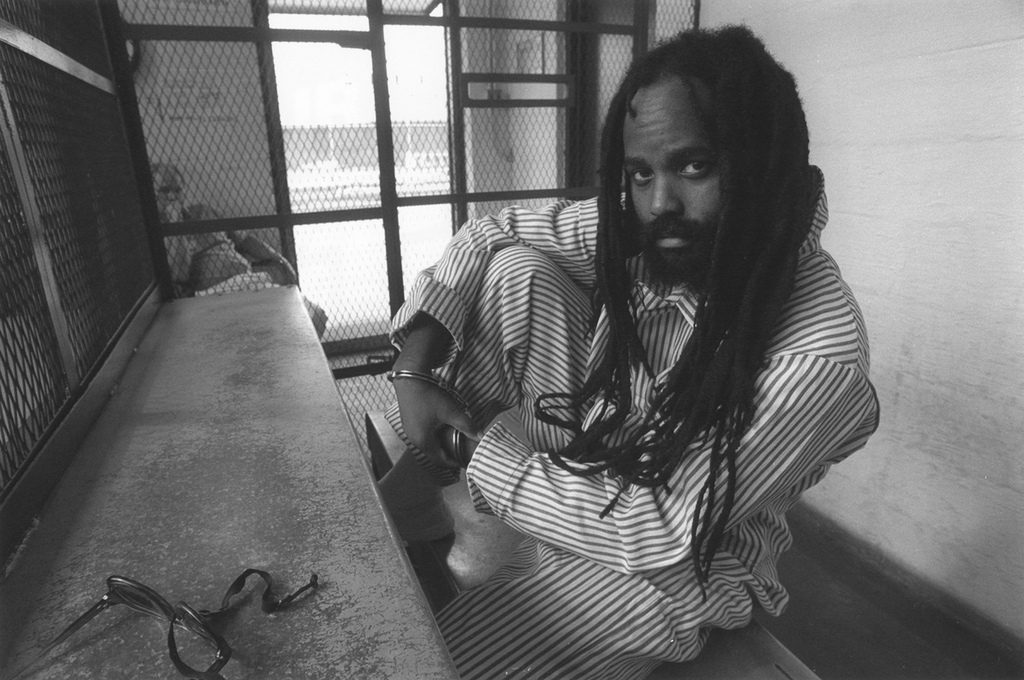Muslim Hip-Hop in the Age of Mass Incarceration
If we could break down those walls to set you free
we would cause we out here and we miss you
— Lupe Fiasco, Free Chilly
There is a struggle going on in the United States that lies just beneath the public’s radar, but has been brewing for several decades. In these years, Muslim hip-hop artists have been wielding music to wage sonic warfare against the evils of mass incarceration. It is a battle of holy warriors rapping over drums of dissent and stressing the terror and pain of imprisonment. For some, the goal is more than just bringing attention to the problem, it is to free their captive kin.
In this struggle, Muslim artists are cutting-edge critics. Their lyrics reveal some of the most radical voices in Muslim America. The poetry in this sonic jihad also offers lessons in war rhetoric — a war of words that rivals the rhetoric of any extremist organization at home or abroad. Muslim hip-hop artists have mastered the art of extreme messaging, and this reality has important implications for Muslims and non-Muslims alike.
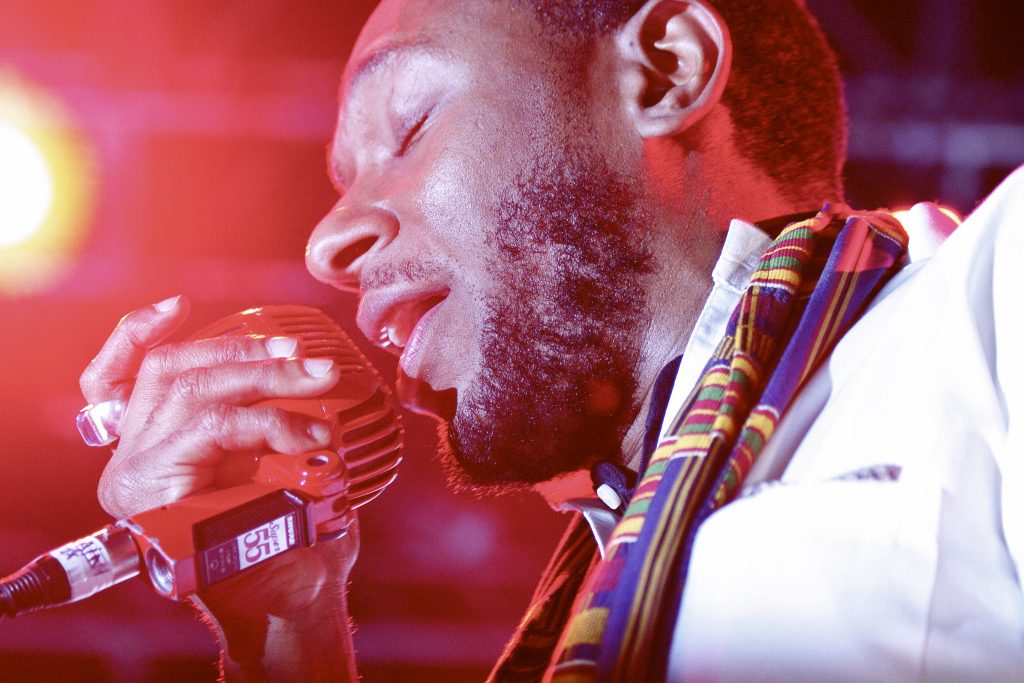
Mos Def >Flickr/Panama Black
Hip-Hop Culture: Cursing Cops, Punishing Prisons
Hip-hop culture and the criminal justice system have been at odds since the culture took root in the late 1970s. At the same time, the country was embarking on a decadeslong incarceration binge that would soon make the U.S. the prison capital of the world.
Hip-hop and mass incarceration also share a symbiotic relationship. More than any other demographic, it was the hip-hop generation that felt the trauma of losing friends, family and loved ones to the proverbial belly of the beast. Moreover, music executives have been infamous for selectively marketing performers who portray criminal, gangster and other subversive identities. Despite such corporate controls, rappers have maintained a steady stream of discourse denouncing police, courts and other offices of the state.
The theme of cops brutalizing youth in poor, ethnic minority neighborhoods appears on album after album and motivates the most influential acts in hip-hop history. Perhaps the greatest anthem is N.W.A.’s Fuck tha Police, which features a courtroom satire of the group putting the police on trial in the case of “N.W.A. v the Police Department.” In the proceeding, Dr. Dre presides as judge and Ice Cube takes oath and offers the first testimony: “Fuck the police, coming straight from the underground. A young nigga got it bad cause I’m brown. And not the other color so police think they have the authority to kill a minority.”
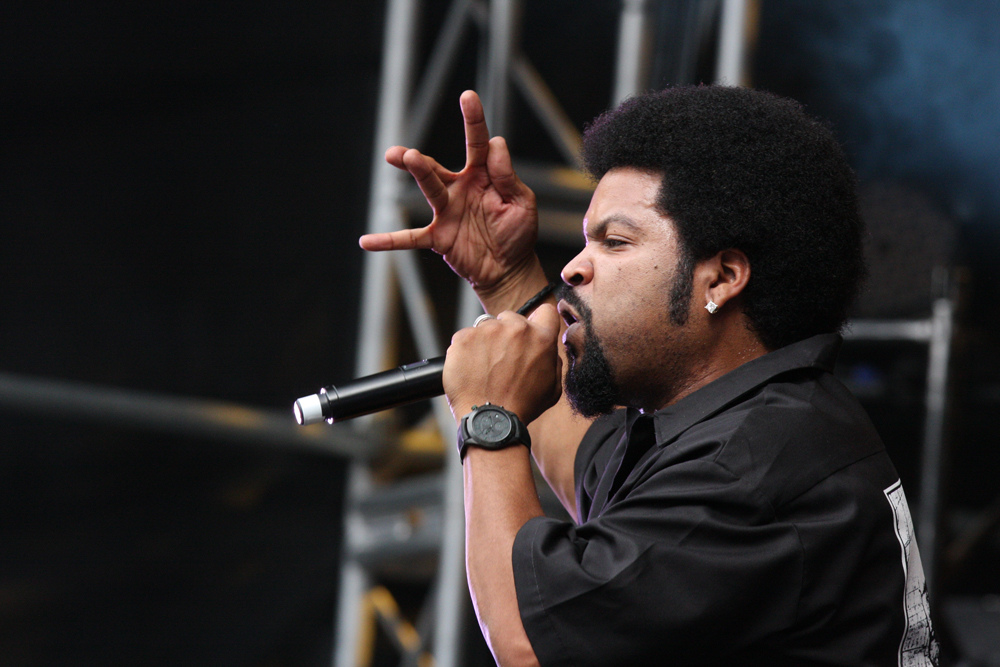
Ice Cube >Flickr/Eva Rinaldi
N.W.A.’s unblinking stance toward police brutality was a bold statement that changed the course of hip-hop history. As a statement on police practices, it went where no other group had gone before — an outright denunciation of the police as corrupt. This work would pave the way for a number of chart-topping acts that would similarly indict police in the music, by artists including ICE-T, Tupac Shakur and 50 Cent.
Like songs denouncing police, in hip-hop, it is also easy to find stories about being in the penitentiary. There are countless songs that condemn prisons and the hardships they breed, as well as whole albums dedicated to their demise — such as the No More Prisons album by The Last Emperor, Dead Prez and Cocoa Brovas — and even groups like Above the Law, State Property and Rappers in Prison, whose names reflect the legal system’s prominence in hip-hop consciousness.
The first popular reference to prisons came in Grandmaster Flash and the Furious Five’s The Message. This song is a scathing critique of life in the ghetto that involves a young, unemployed high-school dropout who commits a robbery and is sentenced to eight years. What begins as a relatively doable stretch quickly deteriorates; the prisoner is “used and abused and served like hell, till one day [he] was found hung dead in the cell.” Released in 1982, this song has been hailed as the “most important” in hip-hop history, partly for declaring the prison’s menace to the hip-hop generation and specific threat to black youth.
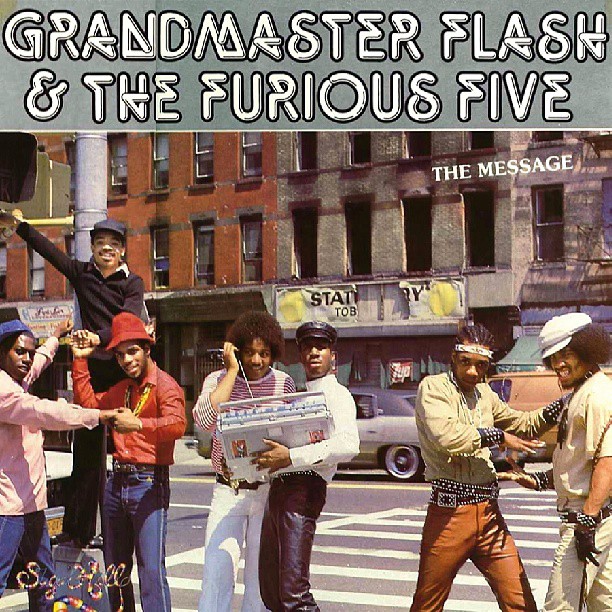
Grandmaster Flash’s “Message” album cover >Flickr/Takeshi
Later artists would take criticism of prisons to new heights. Prisons would be identified with the racist establishment as in Dead Prez’ Police State, which claims, “The average black male live[s] a third of his life in a jail cell cause the world is controlled by the white male.” Other rappers peered into the stark realities of incarceration, such as Hussein Fatal’s Prison, which tells how prison can make even the hardest man break down: “In prison is similar to dying, where a gangster can get a pass if he in his cell crying.” Such lyrics reveal how music is used to critique prisons, a technique that Muslim artists have mastered.
The Gods of Hip-Hop
In the world of hip-hop, Islamic influences cannot be overstated. In some circles, Islam has been dubbed the “official religion” of hip-hop. Muslim rappers from different denominations bring prophetic and charismatic voices to the culture. They promote peace, love and self-realization, yet, as in life, extreme varieties tend toward apocalyptic brands of faith steeped in the rhetoric of retribution. Taken wholly, Muslim artists represent some of the most influential, best-selling and widely known entertainers in hip-hop history. They have steered the course of hip-hop’s struggle with prisons and represent some of the most imaginative and forceful purveyors of the art form.
When interpreting their lyrics, it is worth considering them within a broader framework of Islamic attitudes toward prisoners. For example, passages in the Quran intimately link the treatment of prisoners to spiritual consciousness. Verses describe kindness to captives as a virtue and means of eradicating sins and exercising piety. The message of chapter 90, verses 10 to 13 offers a telling lesson in this regard:
Did We not show him the two paths?
He did not choose the difficult path.
Which one is the difficult path?
The freeing of slaves.
Although the meaning can obviously be understood literally or figuratively, chapter 9, verse 60 provides a more concrete prescription on how zakah, or alms, should be spent that makes it unambiguous: “Zakah expenditures are only for the poor and for the needy and for those employed to collect [zakah] and for bringing hearts together and for freeing captives …” One commentator, Shaykh Ibn Jibreen, has interpreted this passage to indicate a hierarchy in the ransoming of prisoners over slaves: “Ransoming Muslim prisoners who have been captured by kaafirs [unbelievers] is better than freeing slaves, so it is included [in the zakah] and indeed takes priority, because they suffer great harm by being separated from their families and because of the humiliation and torture. So saving them is even more important than saving slaves.”
There are other historical connections as well. For example, Imam Malik, founder of the Maliki school of jurisprudence, allows Muslims to visit non-Muslim lands to ransom captives. This religious duty was not lost on rappers like Mujahideen Team (M-Team), who claim to be “technicians of a Maliki tradition.” In their song, Dead Has Risen, they focus on ransoming “soldiers locked down making juma in prison.” The lyrics shows how ancient principles are alive in the present and even inform the group’s identity as “MCs, gladiators, and slave-emancipators.”
Contemporary views in Islam reflect similar values. For decades, the Nation of Islam has been at the forefront of prison outreach and setting prisoners “free” in the spiritual sense. Such ministries undoubtedly contribute to the widespread conversion of African Americans to the Nation of Islam in prison. In addition, for decades, the Nation has formally demanded “freedom for all believers of Islam.”
Even al-Qaida has referenced the centrality of prisons, with Ayman al-Zawahri vowing in 2013 to set prisoners free from the American-run Guantánamo Bay prison: “We pledge God that we will spare no efforts to set them free along with all our prisoners … and every oppressed Muslim everywhere.”
Two Decades of Blasting
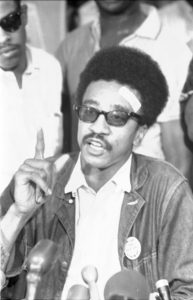
H. Rap Brown >Flickr/Washington Area Spark
The Muslim prison experience is a permanent part of the hip-hop repertoire. The development traces in part to the pro-Muslim, anti-prison music of the Last Poets in the 1960s, along with the influence of H. Rap Brown, who converted to Islam in prison in the 1970s. Rap’s poetry from prison even appeared on the first commercially recorded hip-hop song, The Sugarhill Gang’s Rapper’s Delight in 1979. Moreover, at least one member of Grandmaster Flash and the Furious Five, Rahiem, claimed allegiance to the Five Percent Nation of Islam.
In later years, Mumia Abu-Jamal, a Muslim prisoner, rose as a fierce critic and captured the hip-hop imagination. The former Black Panther and activist spent 30 years on death row for killing a police officer, during which time he produced numerous writings and lectures condemning prisons. Moreover, his voice appeared on numerous hip-hop songs and he has been honored by heavyweights like KRS-One, Public Enemy, Tupac Shakur, Talib Kweli and Immortal Technique in their music. An entire album, The Unbound Project, is dedicated to his plight.
In the 1980s and 1990s, Muslim artists churned out protest tunes that became classics. One of the most forceful statements was Public Enemy’s album, It Takes a Nation of Millions to Hold Us Back (1988), whose album art features a photograph of the group behind bars. Black Steel in the Hour of Chaos is a song in the album that became a crown jewel of anti-prison raps. The story revolves around a prison escape inspired by unbearable prison conditions:
They got me rotting in the time that I’m serving
Telling you what happened the same time they’re throwing
Four of us packed in a cell like slaves—oh well
The same motherfucker got us living in his hell
You have to realize what it’s a form of slavery
Organized under a swarm of devils
A decade later, Nas tells of haunting despair in Last Words, which flips the artistic angle by telling the story from the prison’s perspective: “I’m a prison cell six by nine. Living hell stone wall metal bars for the gods in jail. My nickname the can, the slammer, the big house. I’m the place many fear ‘cause there’s no way out.” This haunted chamber he invokes, however, has more to say about the inmates who fall apart inside:
When you cry I make you feel alive inside a coffin
Watch you when you eat, play with your mind when you sleep
Make you dream that you free, then make you wake up to me
Face to face with a cage, no matter your age
I can shatter you, turn you into a savage in a rage

Beanie Sigel >Flickr/Jonene Nelson
Rapper Beanie Sigel also contributed a similarly chilling classic that spellbinds the listener to the madness of day-to-day existence. Likely reflecting some of his own experiences as a prisoner, his technique in What Ya Life Like? is to educate the listener to life behind prison walls:
What you know about solitary?
Locked down, no commissary …
What you know about no parole?
Life in the hole
Life’s cold, you be eatin’ them swags
Guards on the nightshift they be beatin’ you bad
The hardest nigga turned bitch, he sleepin’ with fags
In the sequel to this song, Sigel continues the lesson, but the technique is reversed and instead, questions are posed to a prisoner:
Can you tell me what you live like?
Can you tell me what that bed like, what’s that cell like?
What’s livin in hell like? Tell me do you eat right?
Do you even sleep right?
Yo, tell me what your life like
Tell me do you sleep nights, tell me what that life like?
Gettin no kites like, no flicks like
Make you wanna quit life
Expressions after Terror
The lyrics above capped a golden era of prison raps. After 9/11, attitudes toward imprisonment by Muslims and Muslim sympathizers took on a more extreme countenance. Perhaps it was a reaction to the social and political backlash against Muslims that led artists like Immortal Technique, Paris and M-Team to unleash a verbal rampage, the likes of which has been described as “jihadi rap.” Their songs glorified suicide bombings, attacks against the White House and setting prisoners free; they also marked a break from typical hip-hop critiques. Previously, the focus was on telling the pains of prison, now the radicalism was infused with greater political urgency.
Due to these political developments, hip-hop’s radical posture toward prisons was itself radicalized. Among the fringes of hip-hop lyricism, a cadre of rappers evolved that pushed the boundaries of fiction and free speech. Among these, Immortal Technique emerged as one of the most militant figures who saw punishment and terror as opposite sides of the same coin in Point of No Return:
This is the point of no return, I could never go back
Life without parole, upstate shackled and trapped
Living in the hole looking at the world through a crack …
A suicide bomber strapped down ready to blow
Lethal injection strapped down ready to go.
Even ultra-radicals like Jedi Mind Tricks took time from their themes of cosmic war to showcase the prison’s moneymaking aspects in Shadow Business:
It’s 1.6 million people locked in jail
They the new slave labor force, trapped in hell
They generate over a billion dollars worth of power
And only gettin’ paid twenty cents an hour
They make clothes for McDonald’s and for Applebee’s
And workin’ forty-hour shifts in prison factories …
Slavery’s not illegal, that’s a fuckin’ lie
It’s illegal, unless it’s for conviction of a crime
The figure quoted above is now well over 2 million. Zion I’s Trigger helps to explain the driving force behind such numbers:
Homeland security, political impurity
Governmental crackdown quick to put the smackdown
Hide away the gat now before they come rush us
The 21st century got too many pressures
Anxious and scared and their plans to depress us
Nowhere to confess because they watch us with sensors
Life is the sentence when you fail to obey
Better take a holiday, run away like OJ

Lupe Fiasco >Flickr/Justin Molush
Lupe Fiasco has been equally outspoken about the harms of prison and equally torn from the impacts. Most recently, Prisoner 1 & 2 offers a pièce de résistance that begins with a collect call from a prisoner that details his plight:
Getting slammed from the protest, no food
Force fed him like OB with a nose tube
I’m just looking at they feet, cause I’m looking for the lord
Looking in the library, looking at the law
10 years deep now I’m looking at the bar
Claim sovereignty because I’m bunkin’ with the Moors
This prisoner details a crazed environ where there is little succor. Still, he manages to find relief by associating with the “Moors,” shorthand for Muslims. Prisoner No. 2 offers a striking contrast since it is not about a prisoner serving a sentence, but a racist guard who is portrayed as serving time just like the inmates: “You a prisoner too, you living here too. You just like us, til your shift get through. You could look like us, you know shit get through. You should be in cuffs like us, you should get strike two.” The lyrics suggest that the crooked correctional officer is a smuggler and should be behind bars with the inmate. The juxtaposition is obvious. Despite their positions, the prisoner may be freer than the guard.
Although the hip-hop assault typically occurs through lyrics, one shocking act of activism came from rapper Yasiin Bey, otherwise known as Mos Def, in 2013. Bey voluntarily underwent the force-feeding process that prisoners at Guantánamo Bay endure, which was a part of a short film produced by the human rights organization, Reprieve. The procedure, however, was stopped before completion as it proved too painful. The activism was less about the pain Bey underwent to make the video, and more to spark the imagination about what happens to actual prisoners who have no power to stop it.

Mos Def/Yasiin Bey >Flickr/uzaigaijin
Lessons in War & Peacemaking
Hip-hop culture has been enmeshed in a war of words from its beginning that continues to be felt in the present. In this phenomenon, law enforcement and prisons are main targets. In trying to bring down the beast, Muslim artists have led a charge that has pushed the heights of imagery and creativity. This point is highlighted in recent articles online that rank hip-hop songs about prison, I Ain’t Goin’ Back: The Best Prison Raps and The 25 Realest Rap Songs, both of which feature rosters that are nearly half Muslim.
As violent jihadists are notorious for speeches built on fierce religious rhetoric, American hip-hoppers are equally adept at battling with words. For example, extremist rhetoric has long used invocations of Muslim sisters and daughters being violated, but hip-hoppers have mastered the technique, as in M-Team’s Day of Retribution:
Oh you sons and daughters of Adam! Oh you brave and righteous souls! Today is the day of retribution. Today is the day that the devil has raised his head; he has undressed his sword; he has decorated his blade with the sacred blood of your brothers; he has violently violated the sanctity of your sisters. Today is the day of retribution. Today is the day of jihad. Today is the day of victory or martyrdom. So oh you who believe, raise your head and ready your weapon!
As such cultural productions illustrate, hip-hop lyrics are among the most extremist speech at play in American society. In this arena, Muslims have carved out a special space as leaders against a foe that continues to swallow individuals and communities whole. In these efforts, rappers need no assistance from their religious brethren abroad, and instead bring their own history of pain and music rooted in slave spirituals.
Taken wholly, the music illustrates that for some, the struggle is an article of faith that puts a premium on Muslim prisoners. This knowledge may be potentially useful, for example, in improving domestic security and diplomatic relations. Indeed one might speculate how the closure of Guantánamo Bay could defuse international tensions and advance national security, and perhaps more importantly, secure the return of American captives abroad.
Perhaps more certain is that ignoring these voices only threatens to perpetuate the status quo, and worse, is negligent to the objectives of violent operatives abroad. Prisons provide ongoing ammunition for both groups and make it easy to envision a future in which the two learn to collaborate.
Such scenarios may seem far-fetched, but life on the ground suggests otherwise. For example, consider that the number of terrorism cases involving Latino Muslims is disproportionate to the general U.S. Latino Muslim population. This development takes greater significance when remembering that Latinos are huge consumers of hip-hop and that Latino groups like M-Team and Immortal Technique represent some the most extremist voices out there today.
The implications of these developments on the music are uncertain. Already, rap songs have been used as evidence in criminal prosecutions against artists. This trend makes it inevitable that rap lyrics will be similarly scrutinized in terrorism cases. Although at least one rapper has been arrested for “communicating a terroristic threat” through his lyrics, it seems assured that Muslim artists will become a future target.
For Muslims specifically, there are additional takeaways. The music demonstrates the profound influence of Islamic culture on hip-hop culture. Some of hip-hop’s biggest stars are Muslim and have created a rich tradition in American culture that Muslims can claim as their own. Of course, this involves practical challenges for Muslim consumers and parents of consumers. As these artists are a powerful draw for American Muslim youth, Muslims face an ongoing task of deciphering which artists to embrace and which to reject.
Finally, such cultural gaps evince the larger problem of intra-Muslim race relations in the United States. As it stands, Middle Eastern and South Asian Muslims have little engagement with their African-American and Latino counterparts. Even in light of various scriptural benedictions for helping prisoners, among mainstream Muslims, this has been the exception. Because racial divisions are tracked by divisions in class, improved race relations will necessarily entail improving class relations, both of which continue to elude Muslims in America.
This article appears in the Winter 2015/2016 print issue of The Islamic Monthly.
The magazine can now be purchased with print on demand! Purchase a single issue here. credit-n.ru
http://credit-n.ru/zaymyi-next.html
http://credit-n.ru/zaymyi-next.html
http://credit-n.ru/zaymyi-next.html
http://credit-n.ru/zaymyi-next.html http://credit-n.ru/zaymyi-next.html http://www.otc-certified-store.com/diabetes-medicine-usa.html https://zp-pdl.com http://www.otc-certified-store.com/women-s-health-medicine-europe.html https://zp-pdl.com/how-to-get-fast-payday-loan-online.php https://www.zp-pdl.com http://www.otc-certified-store.com/respiratory-tract-medicine-usa.html https://zp-pdl.com/online-payday-loans-in-america.php https://zp-pdl.com/best-payday-loans.php https://zp-pdl.com/emergency-payday-loans.php взять займ на киви без паспортазайм на дебетовую картузайм 50000 с плохой ки



